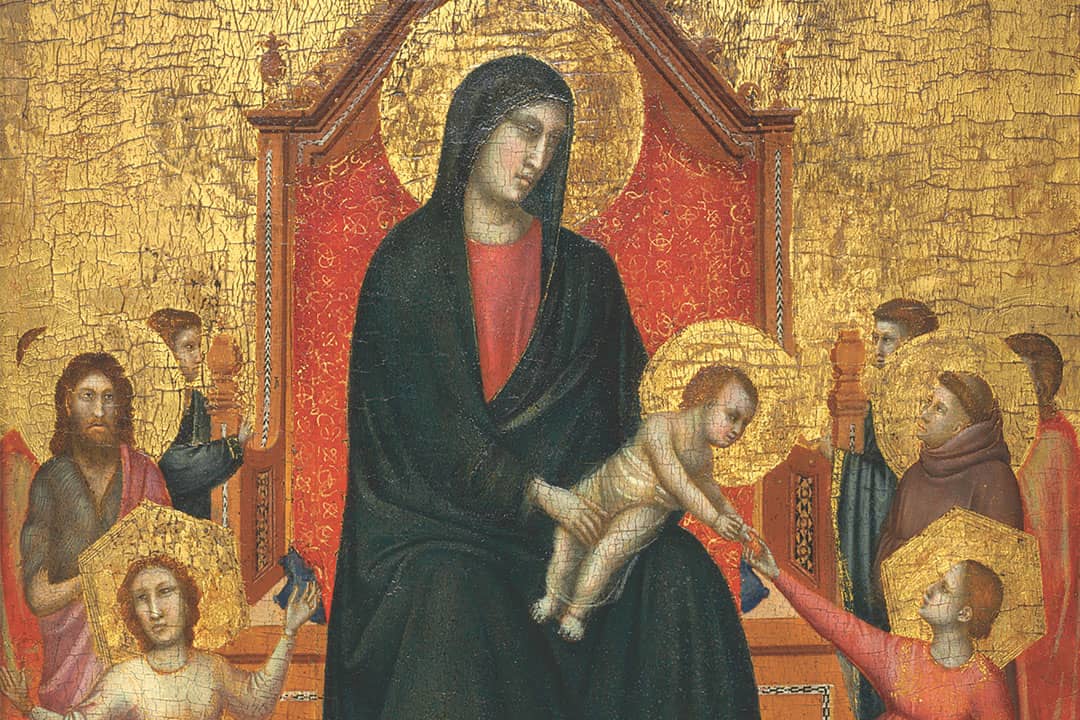Christian history is starred with women mystics in various states of ecstasy and agony. Particularly prominent in the twelfth and thirteenth-century mystical movement in Western Europe, women’s mysticism was characterized by the primacy of the body as a site of connection to God.
With limited access to theological education and little ecclesiastical authority, women’s sense of religion was necessarily more physical than men’s. The association of women with the flesh also endowed them with certain spiritual privileges; texts about medieval women saints highlight their “physical identification with Christ’s humanity and Passion as a function of their femaleness, which was assumed to predispose their bodies to be, like his, loci of nurture and suffering.”
As such, for women to transcend their natural limitations, they must transcend or control their bodies. Mystical women remained virgins throughout their lives or returned to celibacy after a period of sexual activity — perhaps a marriage — because chastity was seen as a sign of spiritual value.
They also often inflicted themselves with crippling pain. Take, for example, Beatrice of Ornacieux (1260–1303) driving nails through her palms, Dorothy of Montau (1347–1394) contorting her body to hang like a cross, or Serafina of San Gimignano (1238–1253) exalting her own paralysis.
Last winter, I grew quietly obsessed with these women. The aesthetics of their self-mortification fascinated me; the reproductions of their pain — in paintings, drawings, or narratives — blinked wetly from my laptop screen, ready for adoration.
What is it that Susan Sontag said about regarding the pain of others? That there is no grand ‘we’ involved in engaging images of suffering. So this is about me, not you. And yes, fine, these women weren’t photographed; there was no photography yet to immortalize them. But now they’re on my laptop and they look like a picture. What makes a picture if not a border and what makes a border if not a caption. So what is it again that Maggie Nelson said about The Art of Cruelty? That it sucks at the viewer.
In most religious traditions, mystics — those with a special connection to the divine — hold a particularly potent kind of authority: the ability to declare a state of exception, to challenge dogma from within. As such, their presence may endanger the authority of the religious institution to which they claim membership.
Some individuals theorize that women mystics used extreme mortification to demonstrate the authenticity of their experiences. To prove they were not just crazy. Yet, women mystics engaged with suffering for a variety of interior reasons far beyond proving their spiritual legitimacy. They suffered in the image of Christ, for Christ, to renounce the mundanity of the world which bound them. Esther Cohen terms this as ‘filopassionism’ — the search for pain in order to imitate Christ.
Teresa of Avila (1515–1582) asked God to strike her with suffering. Her petition wasn’t necessarily corporeal. Spiritual pain afflicts the soul as well as the body. Psychic distress rots from the eyes-in, which anyone with a smartphone knows. Teresa of Avila wrote in her autobiography — now available for purchase from a baldheaded creep online — “I desire to suffer, Lord, because Thou didst suffer.”
She also feared her own weakness: the very real possibility that she could not withstand the suffering required to love God and atone for her sins. Teresa recorded that “just being a woman is enough for my wings to fall off.” Later, she came to believe that God does not send more suffering than what one is able to bear. This thought was a great comfort to her. I read this in February and looked around at my empty apartment.
We — the collective unknowable we — maintain a salacious interest in and discomfort with women who violate themselves. Women’s confessional literature abounds. Entire websites are dedicated to narrative reproductions of women’s pain. Maybe the whole internet is about it. The physical sites of this, the women who share their stories, might get 50 or 75 bucks in return for 500 words on the worst experiences of their lives. They mortify themselves online. Perhaps this is an attempt to demonstrate the authenticity of their experiences, the rawness of womanhood or whatever. But who does this serve? God? No — Jezebel.com!
One scholar wrote that although Teresa finds fulfillment and self‐actualization through suffering and the surrender of her will, “such practices entail the substantial risk of total self‐annihilation.”
Now, I know that it is not fashionable to talk about women’s suffering without dismay. To secular readers, the maceratory practices of these medieval women seem obscene. Moreover, the political subject of the feminist lens — which has been fitted into our cultural mainstream, you can’t deny — remains, in the words of Saba Mahmood, “a liberatory one, whose agency is conceptualized on the binary model of subordination and subversion.”
We want our women to be victims of pain. We want our women to suffer under the hands of others. But we also must question the normative nature of that which we may hope to encounter in history.
Many contemporary feminists look for and feel affirmed by women of the past who ‘smashed the patriarchy’ in palatable ways. We can put their delicate little faces on tote bags and mugs, embroider them on t-shirts and charge for the privilege. However, as the lives of these Christian mystics demonstrate, the agency of women lies not only in how they can resist norms, but also in the various ways they may inhabit them.
Disclosure: Kate Reeve previously served as Volume 139 Features Editor of The Varsity.


